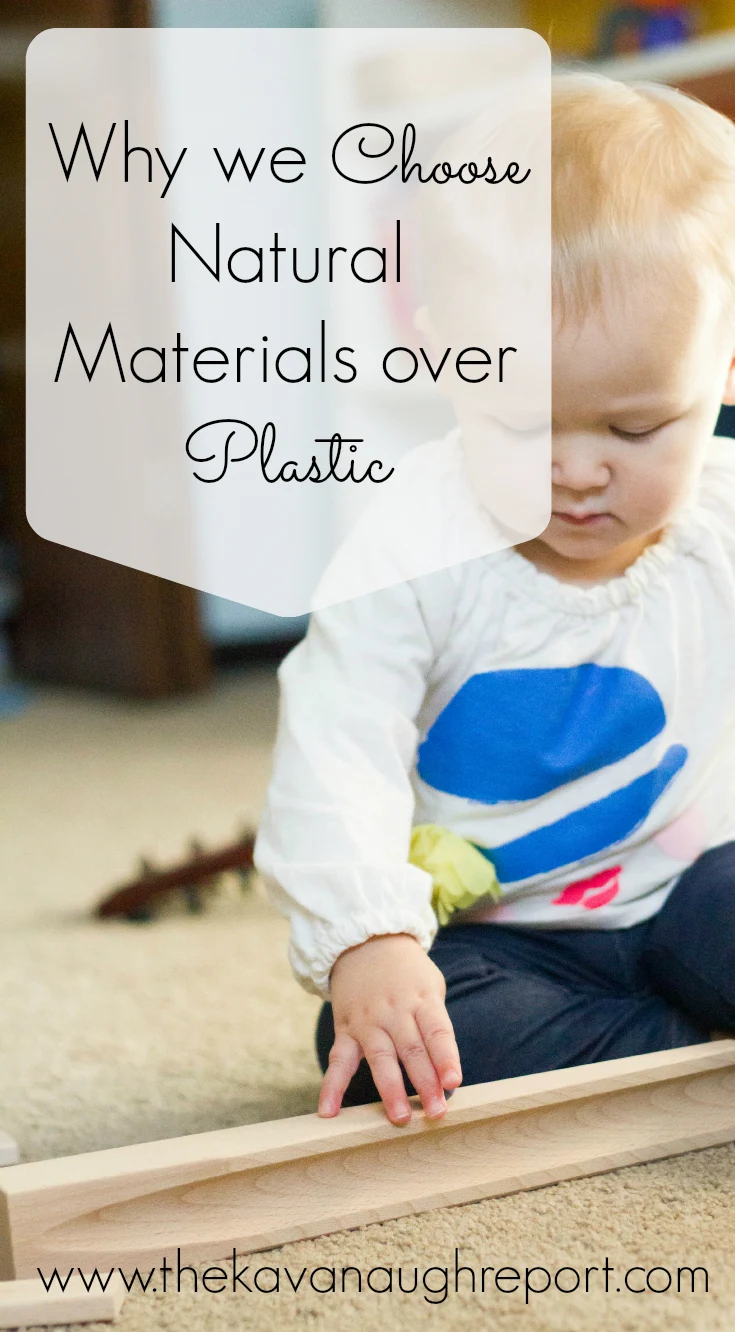I was at a baby shower recently with my mom when another woman showed up with her grandkids and a small plastic children's computer game. We began talking and she asked if we had a similar toy. Before I could answer, my mom replied "No! She's a weirdo that won't let her kids have plastic!" Now, I don't mean to throw my mother under the bus for an off hand comment, but I think this is a common misconception for people looking at the Montessori community. So, let me explain why we choose natural materials over plastic and when we don't.
This post contains affiliate links at no cost to you.
This post contains affiliate links at no cost to you.
First, I want to say, my children have plenty of plastic toys and materials. There are times, even, when I prefer plastic. One example, is animal figurines. I strive to give my children realistic representations and plastic is simply the best way to do this. Magnatiles and Legos also make my plastic list!
But, in many situations, I do strive to provide natural materials -- like wood, metal, fabric or glass -- when I can.
The Truth about Montessori and Plastic
The truth is that plastic wasn't an issue in Dr. Montessori's time. We don't really know if she would have incorporated plastic more into her work and classroom environments. Plastic can make things more financially accessible. Especially today, wooden toys can be far more expensive than plastic ones. However, the issue with plastic goes beyond just playthings, but everything in a child's environment.
I have a few reasons that I prefer natural materials over man-made ones. As a Montessori parent, I want to create an environment that is as beautiful as possible. I want to create spaces that show my children that they are valued. Montessori believes that children not only deserve beautiful spaces, they excel in them. Natural products are an important part in making our space beautiful.
Natural materials also help to teach natural consequences - an important part of the Montessori method. If you drop a plastic cup, you drop a plastic cup. There's no need to be careful. No need to learn to respect the material. However, if you drop a glass cup, you get a very different story. Watching a glass break, or a toy even, teaches a child to be more exact and careful. But, it also teaches children to respect their materials and environment. To take ownership over it and to care for it.
When I hand a child a beautiful natural material, I hand my child my respect and trust. I am showing them they are important enough to give them something real. I'm not giving them some baby-proofed version of a real tool. I'm teaching them to use a real one. I'm trusting in their abilities, I'm respecting their whole self as a very capable person. I'm also giving them the opportunity to make a mistake. To learn from that mistake. When a plate shatters, there is a lot to be learned. When a toy breaks, there is a lot to be learned. I'm giving them the space and the trust to handle disappointment, mistake and error.
Then, there is the environmental factor. There's BPA concerns and chemical concerns and its effect on our health and the environment. While, this is a concern, it's not a huge worry for me but I am aware of this issue. So, that's why we limit plastic in our home. If that makes me weird, I'm cool with that!
What is your plastic policy? Have you seen any difference with your child's interest in non-plastic verses plastic materials?





